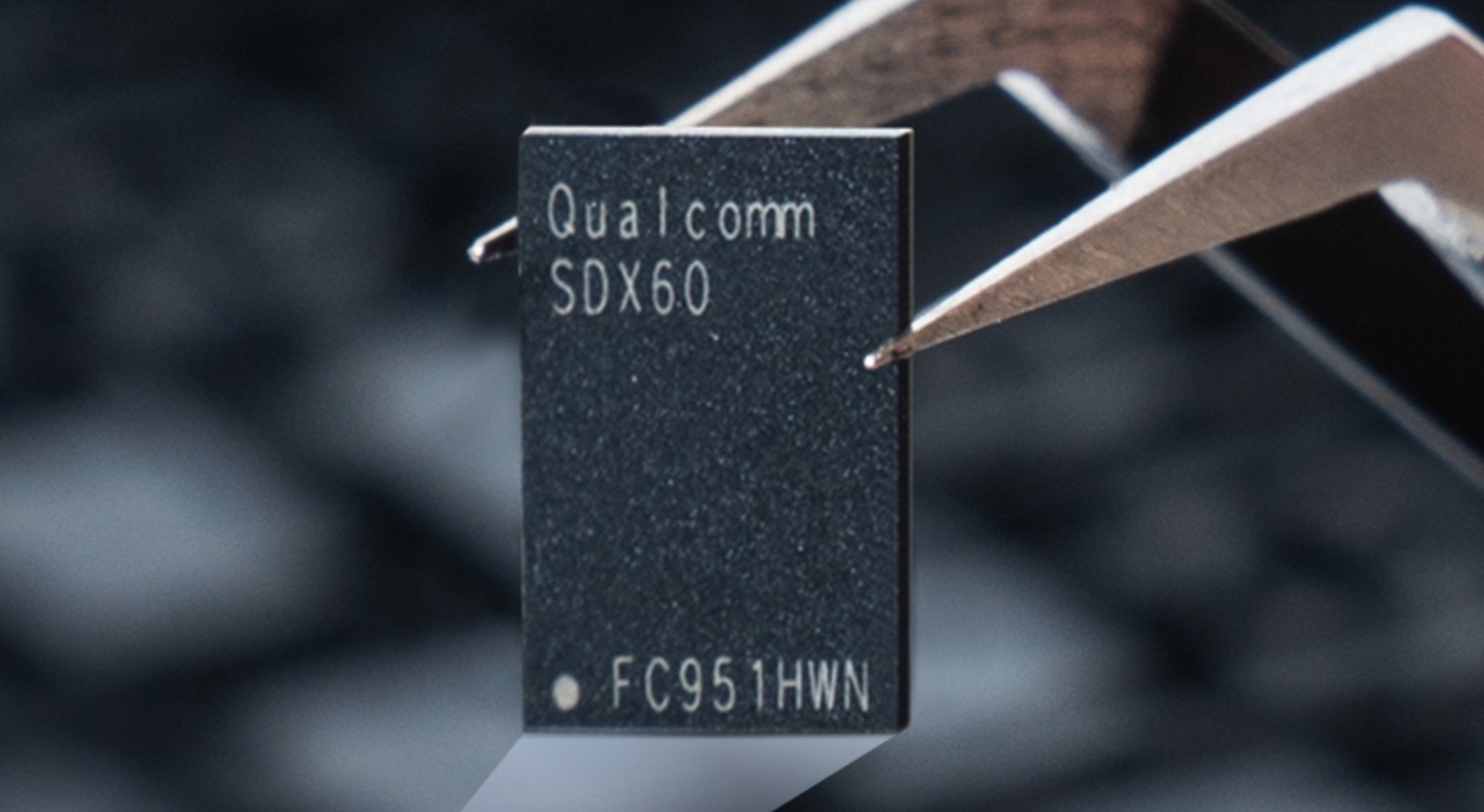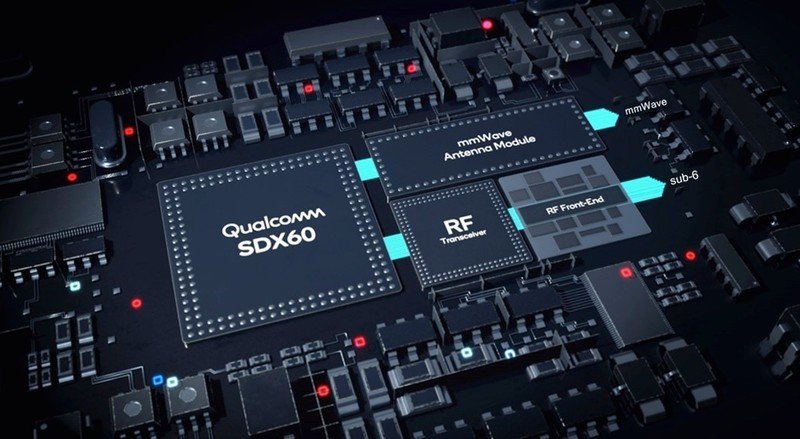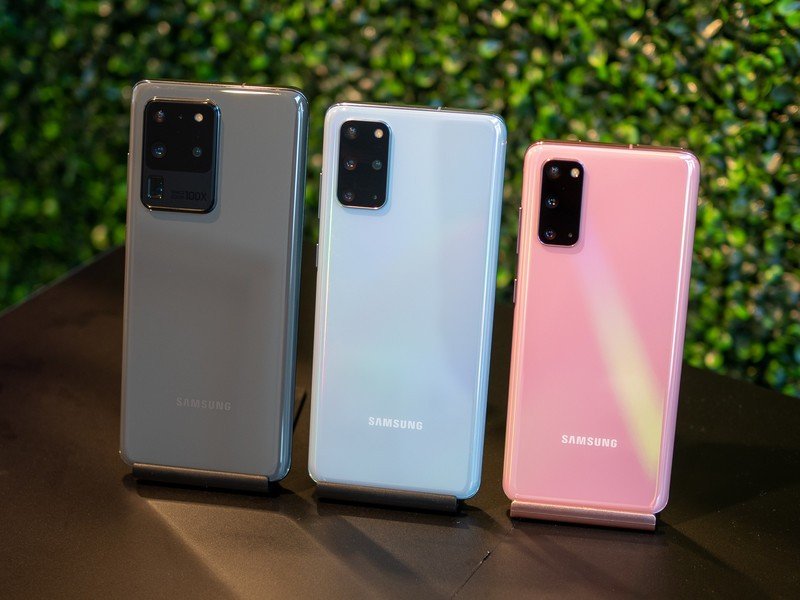Qualcomm Snapdragon X60 vs. X55: Next year's ultra-fast 5G chip, explained

When it comes to new technology, there's a natural timeline that seems to happen. The first generation feels like a proof of concept and offers enough to get us interested, the second generation works of fixing flaws and refining the basics, and the third generation is when it is mature enough that you really want to have it.
Qualcomm's Snapdragon X60 5G modem is just that: the third generation of the company's 5G modems and it's ready for prime time. Compared to the X50 (first-generation) and X55 (second-generation) it's set up to make considerably better use of 5G networks in ways that we will notice.
Smaller is better

The X50 was built on a 10-nanometer process and the X55 was built on a 7-nanometer manufacturing process. With the X60, Qualcomm says it has moved forward and it will be built using a 5-nanometer manufacturing process.
5nm chips are so hard to build that they broke Moore's Law.
You've probably heard people talk about manufacturing processes and nanometers and what it all means. In a nutshell, new tech allows the transistors and other parts used inside a microprocessor to be packed more densely. When you can do this, you get a chip that can do one of two things: use less power to do the same work the older chip could do, or do a lot more using the same amount of power as the older chip.
- A chip built using the 5nm process like the X60 would use 15% less power to do the same amount of work a chip built using the 7nm process like the X55.
- A chip built using the 5nm process like the X60 would be able to do 30% more work using the same amount of power as a chip built using the 7nm process like the X55.
More importantly, when it comes to small portable devices like smartphones, is that the physical size of the chip is smaller. That means phone makers like Samsung can make a smaller phone or use the extra space to add something like a larger battery.
The X60 will do more than the X55 could, but it shouldn't need to run at full power all the time so it will save battery. Bigger batteries from device manufacturers are something we can surely hope for, but I am guessing instead we will see thinner 5G phones when the X60 comes to the market instead.
Faster is better

You might be old enough to remember the drastic speed differences between 3G networks and true LTE networks from a few years ago. 5G offers the same type of leap in the speed department, but the gear hasn't been able to take full advantage of it just yet. Well, the X60 changes that.
Get the latest news from Android Central, your trusted companion in the world of Android
With true mmWave and Sub-6 aggregation, the X60 is going to make 5G really fast.
The X50 could connect to either a millimeter-wave network (like Verizon's) or a sub-6 GHz network (like Sprint's), but not both. The X55 is able to connect to both types of network but not at the same time. The X60 breaks that barrier and can aggregate millimeter-wave and sub-6 GHz networks as well as aggregate multiple types of sub-6Ghz networks all at once. That means the X60 can combine a data stream from different network frequencies which results in higher speeds and bandwidth.
More: Sprint's 5G network solves a coverage problem but lacks Verizon's ridiculous top speeds
Consider a realistic scenario once 5G becomes more commonplace: your carrier has nearby millimeter-wave small cell sites and you're also in the range of a tower using FDD and TDD Sub-6 data streams. A phone with an X50 modem can only connect to one of those options. A phone with an X55 modem can connect to any of them, but only one at a time. The X60 just connects to everything all at once.
This does two things that are important: it allows us to actually come close to the peak 7.5Gbps speeds 5G has to offer when we are in a lucky situation where everything is available, and it allows carriers some freedom to move existing non-standalone 5G towers to the newer standalone mode without much of a disruption.
Carrier Customization is better

The X60 modem can already connect to almost all 5G signals worldwide, but Qualcomm also offers a choice of antenna modules. The existing antenna module used in current devices is compatible with all connections, but the newer version is smaller and offers improved millimeter-wave performance for the frequencies used in North America, Europe, Japan, and South Korea.
Explaining 5G: Millimeter wave, sub-6, low-band and other terms you need to know
When you exclude China — which is focusing on mid-band frequencies for now — that covers the majority of users who buy into premium devices. Since 5G devices are considered premium (for now, at least) it allows companies to build phones compatible in most of the world but specifically tailored for those markets where the phones are most likely to be sold. It also means your 5G phone should be 5G on just about any business trip that isn't bound for China.
Carriers love to sell custom phones.
Lastly, the X60 is part of a full 5G modem-RF system that includes all the radio components. Regulators don't like that type of business, and phone makers tend to wish the package was cheaper, but it also means that all the radios inside the phone were designed to work together and use less power. For us, it means less battery drain and we all want less battery drain from our devices.
So, when?

TSMC and Samsung are both capable of manufacturing 5nm chips right now, though there haven't been any large-scale tests of the process. Expect the production of the chips to start in 2020 and we should see the X60 paired with the next generation of Snapdragon chip in early 2021.
Look for phones with the X60 in 2021, probably starting with the Galaxy S30.
There's no word on any backward compatibility, so it's expected that phones with the X60 will also be using the Snapdragon 875. Mid-range chips should be compatible with the X55 then, so everyone benefits.
Qualcomm says 450 million 5G phones will ship in 2021
The real question is if the carriers will be ready. 5G rollouts aren't cheap and there has been a lot of work getting 5G in place, but we've yet to see a true coast-to-coast nationwide 5G network and might not see one for several years.
And by that time everything might have changed and the X60 won't seem as wonderful as it does today. But still, without the hardware, there's no way to build the network so we're excited to see what Qualcomm shows off at its next 5G summit.

Samsung Galaxy S20
The Galaxy S20 is the flagship to get in 2020. The 120Hz display is in a league of its own, you get the latest Snapdragon 865 chipset with 5G connectivity, and the 12MP primary camera is joined by a 64MP lens with 3x zoom.

Jerry is an amateur woodworker and struggling shade tree mechanic. There's nothing he can't take apart, but many things he can't reassemble. You'll find him writing and speaking his loud opinion on Android Central and occasionally on Threads.
